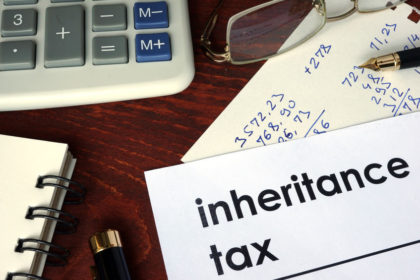The property allowance is, in effect, two reliefs being both an exemption from tax and a minimum deduction in calculating letting profit. It applies to all types of lettings whether UK or overseas including commercial rental income but excluding furnished holiday lets.
Read more…Allowable pre-letting expenditure
2 minute read.
Most expenditure incurred by a landlord will be allowable at sometime whether as capital (where it is deductible in the capital gains tax computation on disposal) or as a business (revenue) expense against rental profits.
Read more…Off-payroll working: Forthcoming ‘attractions’

7 minute read.
This article was first published in Tax Insider Professional in August 2019.
Sarah Bradford outlines the recent consultation proposals and sets out what clients can do to prepare for the off-payroll working changes to be introduced in April 2020.
Read more…Cash basis vs accruals basis for landlords

10 minute read.
This article is from our monthly tax newsletter Tax Insider Professional.
Lee Sharpe looks at the recently-introduced cash basis of assessment applicable to landlords.
The cash basis for property businesses was introduced via F(No 2)A 2017 Sch 2, and its effect is felt liberally around ITTOIA 2005 Pt 3, dotted mainly around ITTOIA 2005 ss 271A–276A, and ITTOIA 2005 ss 307A–307F.
Read more…Structures and buildings allowance: Now available

5 minute read.
Nisha Patel looks at the main rules of the new structures and buildings allowance.
The new structures and buildings allowance (SBA) regime has received parliamentary approval and came into force on 5 July 2019. SBA claims can be backdated to give relief on eligible costs incurred on or after the 29th October 2018.
Read more…George Anson versus HMRC: An update

4 minute read.
Liz Zitzow looks at the case of Anson v HMRC on the subject of US/UK tax.
Background
It’s been a few years on since Anson v HMRC back on 1 July 2015. For those who don’t know or recall that case, here’s what happened: Mr Anson owned a limited liability company (LLC) which elected like most LLCs to treat itself as a partnership in the US.
The UK doesn’t recognise this and it results in double taxation despite our lovely US/UK income tax treaty. The tax paid by the individual on his partnership income in the US is not a deductible tax for the corporation’s tax return with HMRC and it’s not useful as a credit against his personal tax on the dividends since it’s for work, not dividends.
Read more…IR35 – Key Terms

4 minute read.
IR35 has its own special terms and the following is a glossary of key terms as they apply to the rules in their application prior to 6 April 2020 where the end client is in the private sector (and prior to 6 April 2017 where the end client is in the public sector). The terms, as defined by HMRC are set out in their Employment Status Manual at ESM8020.
- ‘Client’ – the entity for whom the worker provides his or her services. The ‘client’ could be any third party in the contractual chain.
- ‘Company’ – a body corporate or unincorporated association, but not a partnership.
- ‘Deemed employment payment’ – the amount that the intermediary is treated as paying to the worker under the IR35 legislation and which is chargeable to income tax as employment income. The National Insurance equivalent is the ‘worker’s attributable earnings’. For simplicity’s sake, the term ‘deemed employment payment’ is assumed to refer to the amount liable to both income tax and National Insurance, unless otherwise stated.
- ‘Intermediary’ – the third party through which the worker provides his or her services. An intermediary could be a company (e.g. a personal service company or a service company), a partnership (including a limited liability partnership), an unincorporated association or an individual.
- ‘Relevant engagement’ – an engagement to which the IR35 legislation applies.
- ‘Worker’ – the individual who personally performs the services for the client.
- ‘Worker’s attributable earnings’ – the National Insurance equivalent of the ‘deemed employment income’ on which Class 1 National Insurance contributions are payable
This is an extract from our tax report IR35: Tax Tips for Contractors – find out more here.
Sole trader to limited company

6 minute read.
Incorporation involves the disposal of an existing self-employed or partnership business to a new entity (‘person’) in exchange for shares in the company. Any assets of the business (e.g. the business’s premises) are transferred to the company which then carries on the business as successor to the former self-employed owners.
Read more…Redirecting inheritances effectively for IHT purposes using deeds of variation

5 minute read.
Malcolm Finney looks at the quirky deed of variation and its use for inheritance tax purposes but warns against its abuse.
It is, of course, impossible for a testator to predict what circumstances may exist at the date of their death. In particular, they will not know the circumstances, financial or otherwise, of their proposed beneficiaries.
Read more…VAT: Claiming bad debt relief

5 minute read.
Andrew Needham considers whether claiming bad debt relief is as straightforward as it seems and looks at two areas that can cause confusion.
The basics of claiming bad debt relief (BDR) are contained in VATA 1994, s 36, and permit BDR to be claimed from HMRC when an invoice remains unpaid, or partly unpaid, for six months after the due date for payment on the VAT return covering the period when the BDR becomes claimable.
Read more…



